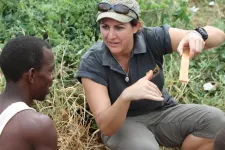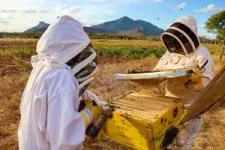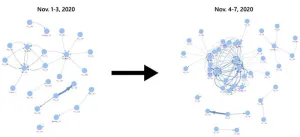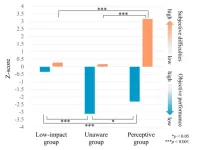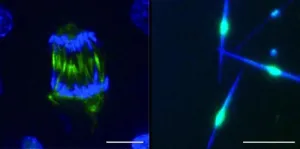Key findings include:
Beehive fences are a proven success in reducing human-elephant conflict in Africa. Savannah elephants avoid beehive fences housing live honey bees up to 86% of the time during peak crop seasons. Across all seasons and the entire study period, the fences deterred an annual average of 76% of 3,999 elephants that approached the study farms in Kenya. The study offers promising insights into using nature-based solutions to protect both livelihoods and wildlife. Increased habitat disturbance or more frequent droughts, however, could reduce the effectiveness of beehive fences as a natural elephant deterrent in the future. The study, published in the Journal Conservation Science and Practice, offers promising insights into using nature-based solutions to protect both livelihoods and wildlife. The study was conducted by the research charity Save the Elephants (STE) in collaboration with the Wildlife Research and Training Institute (WRTI), Kenya Wildlife Service (KWS), and the University of Oxford.
However, researchers caution that ongoing habitat degradation and persistent droughts could threaten the long-term effectiveness of this natural deterrent.
Kenya is facing rapid human population growth, with a 59.4% increase between 2000 and 2020, which has led to the shrinking of elephant habitats as human settlements and infrastructure expand. Finding sustainable ways for people and elephants to coexist is becoming an urgent challenge for KWS, responsible for protecting the country’s natural resources amid growing economic development needs. Keeping elephants safely away from subsistence farms is a major focus of Save the Elephants’ Coexistence Programme.
Beehive fences, introduced in 2007 by STE and KWS, in partnership with the University of Oxford, offer an innovative approach. These fences consist of a series of live beehives strung together between posts, creating a physical, auditory, and olfactory deterrent to elephants. The elephants’ natural fear of being stung keeps them away, while the fences also benefit farmers by providing pollination services and generating income through honey and wax production.
The study monitored 26 farms protected by beehive fences in two villages near Tsavo East National Park, and analysed nearly 4,000 incidents of elephant approaches. Elephants roam freely in and out of the park throughout the year as they look for mates, food and water, but can be attracted by the smell and nutritional richness of agricultural crops.
During six peak crop-growing seasons (November to January 2014-2020), 3,027 elephants approached the farms and the beehive fences successfully deterred an annual average of 86.3% of elephants from raiding crops. Across all seasons and the entire study period, including a drought, the fences deterred an annual average of 76% of elephants.
However, challenges such as the drought—which reduced hive occupation by 75% during 2017 —negatively impacted honey production and profits both during the drought and for three years after. Despite this climatic shock, the 365 beehives used in the study produced one ton of honey, sold for $2,250.
Dr Lucy King from Save the Elephants and the University of Oxford’s Department of Biology, who led the study, highlighted the effectiveness of beehive fences but warned of future risks. "Beehive fences are very effective at reducing up to 86.3% of elephant raids when the crops in the farms are at their most attractive," she said, "but our results also warn that increased habitat disturbance or more frequent droughts could reduce the effectiveness of this nature-based coexistence method."
Dr. Patrick Omondi, Director Wildlife Research and Training Institute, emphasised the importance of continued research and funding for sustainable solutions. "Kenya is facing increasing challenges with human-elephant conflict, and solutions like beehive fences empower communities to manage their own farm protection," he said. "We need more research and support for nature-based solutions to help our communities live better alongside wildlife."
Previous research by Save the Elephants, KWS and the University of Oxford in partnership with bioacoustician scientists from Disney's Animal Kingdom® has shown that elephants respond strongly to bees, running away from disturbed bee sounds and exhibiting behaviours such as head-shaking, dusting, and rumbling to warn others. While elephants’ thick skin usually protects them, disturbed honey bees target sensitive areas like the eyes, mouth, and trunk, where their stings cause discomfort. This natural fear of bees has been harnessed as a practical tool to keep elephants away from farms, helping to promote coexistence between humans and wildlife. To date over 14,000 beehives have been hung as elephant deterrents in 97 sites across Africa and Asia.
The full study - ‘Impact of Drought and Development on the Effectiveness of Beehive Fences as Elephant Deterrents Over Nine Years in Kenya’ - will be published in Conservation Science and Practice at 11 am GMT/ 7 am ET Tuesday 29 October: https://conbio.onlinelibrary.wiley.com/journal/25784854
Photos, footage with captions and credits available here
For further information, additional footage or to arrange interviews, please contact:
Save the Elephants - Jane Wynyard - jane@savetheelephants.org
Wildlife Research and Training Institute - Dr Fredrick Lala - lalafredrick@gmail.com
Kenya Wildlife Service - Paul Udoto - pauludoto@gmail.com
Oxford University - Caroline Wood - caroline.wood@admin.ox.ac.uk
Donors to this research have been:
Disney Conservation Fund, Ernest Kleinwort Charitable Trust, Rufford Small Grants Foundation, Glassybaby Foundation, United Nations Environment Program, Future for Nature Foundation, St Andrews Prize for the Environment, Helen Gurley Brown Foundation, Wildlife Conservation Network, Save the Elephants and the University of Oxford.
About Save the Elephants
Save the Elephants works to secure a future for elephants. Specialising in elephant research, it provides scientific insights into elephant behaviour, intelligence, and long-distance movements and applies them to the challenges of elephant survival and harmonious coexistence with humanity. High-tech tracking helps plan landscapes while low-tech beehive fences, among other tools, provide people /communities living with elephants with protection as well as income. Education and outreach programmes share these insights with local communities as the true custodians of this rich heritage. Save the Elephants (www.savetheelephants.org) runs the Elephant Crisis Fund (www.elephantcrisisfund.org) in partnership with the Wildlife Conservation Network, providing flexible and responsive support to NGOs combatting the ivory trade, promoting human-elephant coexistence, and protecting elephant landscapes.
About the University of Oxford
Oxford University has been placed number 1 in the Times Higher Education World University Rankings for the ninth year running, and number 3 in the QS World Rankings 2024. At the heart of this success are the twin-pillars of our ground-breaking research and innovation and our distinctive educational offer.
Oxford is world-famous for research and teaching excellence and home to some of the most talented people from across the globe. Our work helps the lives of millions, solving real-world problems through a huge network of partnerships and collaborations. The breadth and interdisciplinary nature of our research alongside our personalised approach to teaching sparks imaginative and inventive insights and solutions.
Through its research commercialisation arm, Oxford University Innovation, Oxford is the highest university patent filer in the UK and is ranked first in the UK for university spinouts, having created more than 300 new companies since 1988. Over a third of these companies have been created in the past five years. The university is a catalyst for prosperity in Oxfordshire and the United Kingdom, contributing £15.7 billion to the UK economy in 2018/19, and supports more than 28,000 full time jobs.
END
